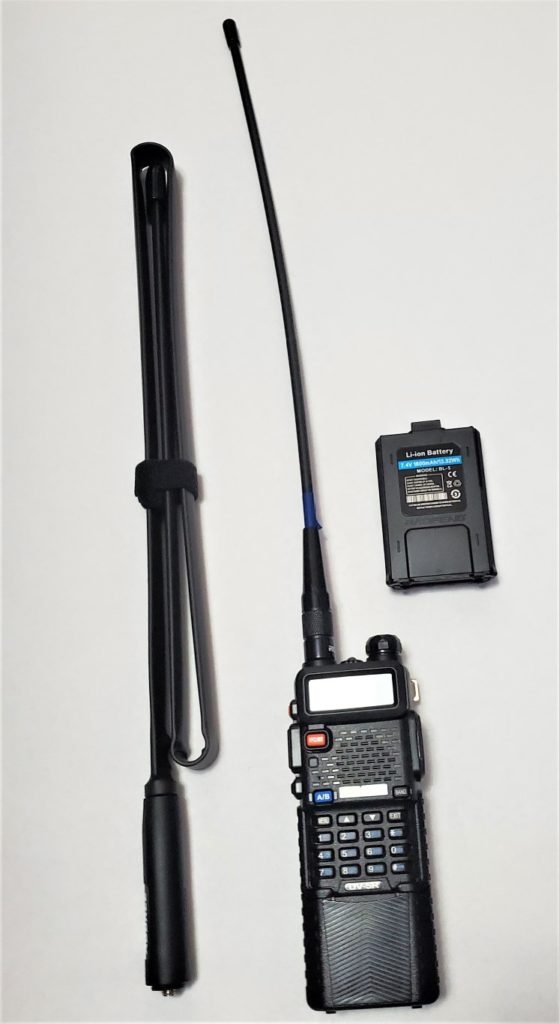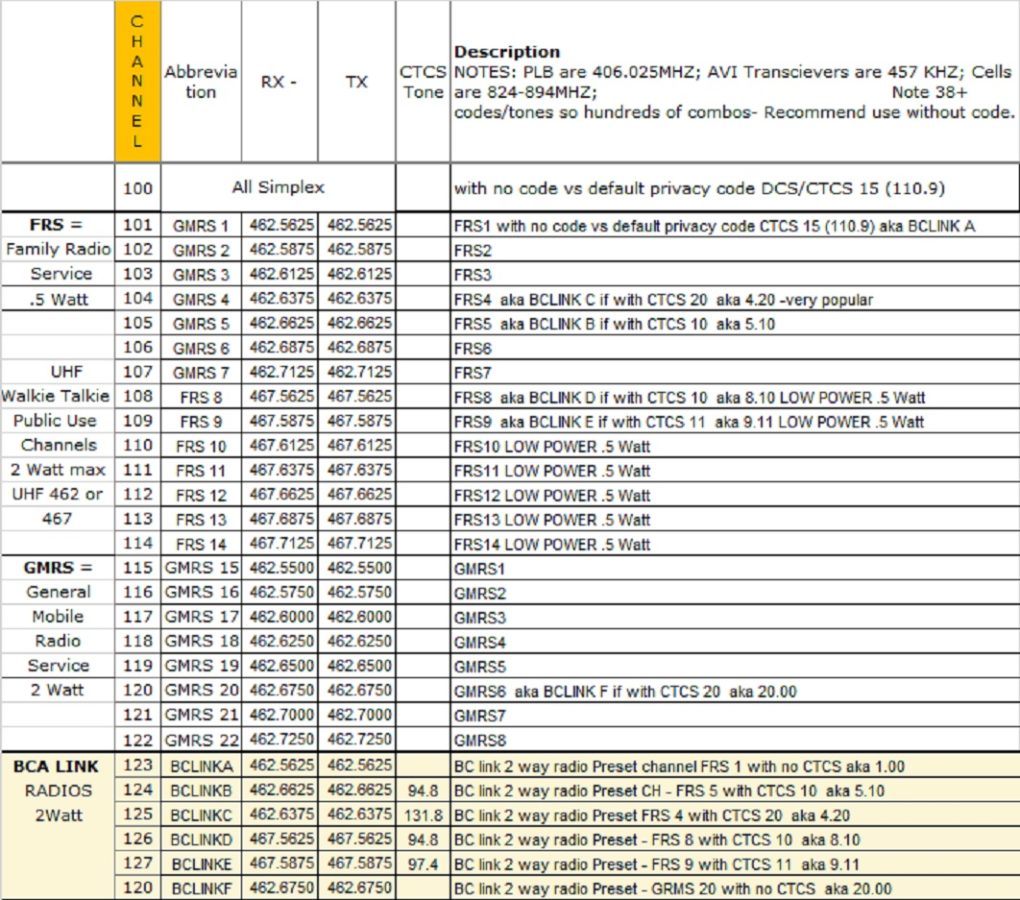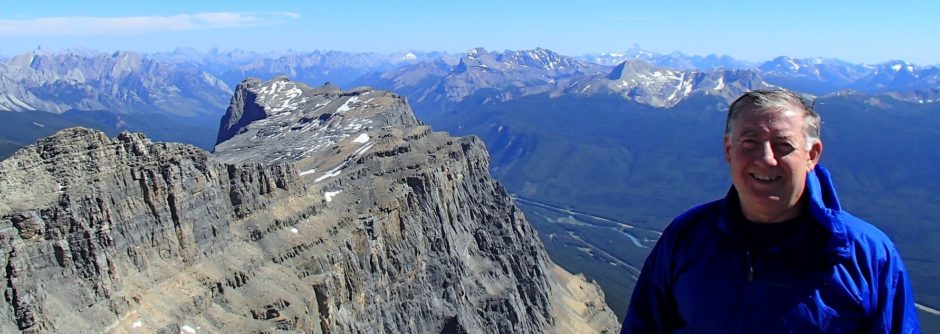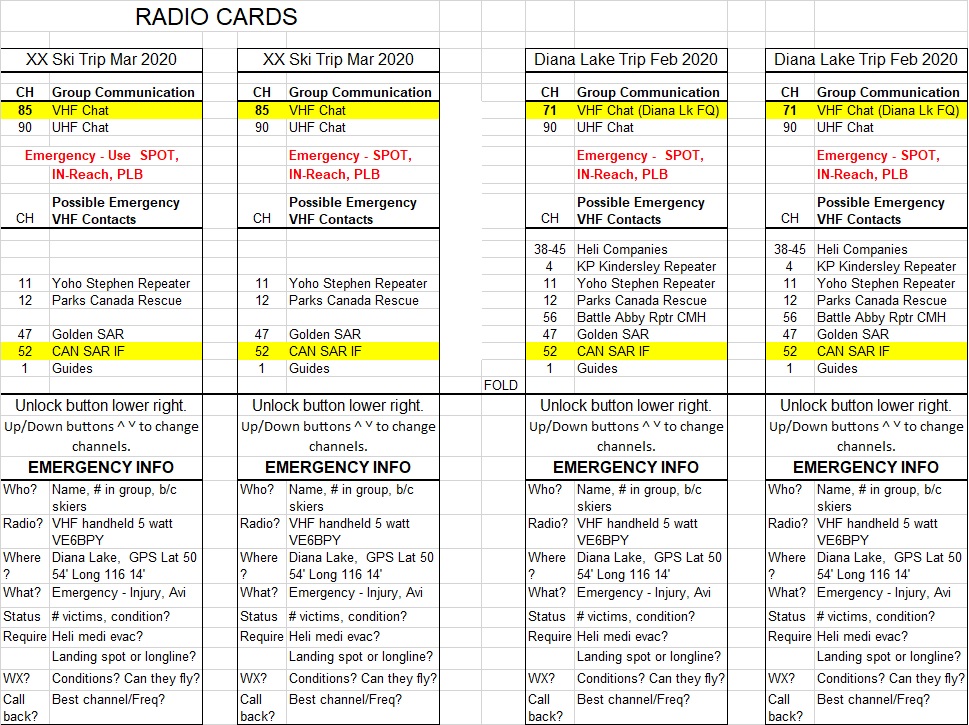NOTE: All Baofeng UV-5R sold in Canada now have reduced VHF/UHF Frequency ranges and cannot access frequencies like commercial, logging roads and Family Radio Bands.


Baofeng UV-5R VHF/UHF Radios for Backcountry use(Should get Ham Radio licence)
Obtained my Ham radio license in 2019 decided to review some Baofeng radios for my friends. I have both UV-5R’s and UV-5R 8 Watts. Serious radio guys view the Baofeng radios as low grade units but they are cheap and useful as walkie talkies. You won’t cry if you lose one or bust it in a crash.
Radios are great for intergroup communication and are really useful if group splits up, skiing in pairs, tree wells, wind, thick trees, accidents, etc. VHF radios are also required for Forest Service Roads(FSR) aka logging roads so you can monitor logging traffic to prevent accidents.
VHF/UHF radios are complex and you should get a license so if all this is too much then just get some FRS radios at Canadian Tire or Cabela’s for inter group contact. Get a couple of blister packs and some mics. Agree on a channel and test them in the park lot. I recommend that you do not use privacy codes as other groups or rescuers can not talk to you unless they know code. Get the GRMS 2 Watt ones as some FRS are only .5 Watt. Cheap, simple and legal.
Radios are useful but still good to have a In-Reach, PLB or Spot for satellite emergency calls. Simple and reliable can be good.
VHF radios can use repeaters for longer distances but can be complicated to use and program. Commercial repeater use is not legal except in emergencies.
Radios can speed up response time/accuracy if you can talk directly to Rescue or Heli.
The new SAR IF (Inter agency frequency 149.080 MHz) has promise but not yet in wide use. SAR, Heli, Parks, Airforce, EMF can all talk together.
Relatively easy to use keypad in frequency mode to setup several frequencies as Simplex (Tx and Rx on same Freq) to use for a group communication.
Best to use Chirp software on a computer to program and name multiple channels(up to 128 CH) with designated frequencies, offsets and tones and then use channel mode.
Create master file and use chirp to clone to all radios so consistent. Update changes on master file and re-upload to all radios.
Repeaters are Duplex -(Tx and Rx on different Freq with offset and tones) and are difficult to program into radio manually.
All the commercial users and park repeaters have unique FOT (Frequencies, Offsets and Tones) for both uplink and down link and the use of their frequencies is banned except in emergency.
Parks, SARs, Guides, and Ham radio frequencies are also off limits except in emergency.
These radios are technically illegal to use unless have Ham License but not illegal to own or to listen. Also illegal to use these on FRS/GMRS channels so be careful and respectful of other users.
Complaints about use are unlikely if stay off commercial frequencies/channels and carefully use Frequencies like the Ham frequencies or Family Radio Service(FRS) and GMRS channels in backcountry.
Usually no one else out there but if someone is using a FRS/GMRS channel then just move to another channel or frequency as the 5 or 8 Watts transmits can drown them out.
Privacy Codes, PL, DCS, CTCSS, etc are just Tones or digital squelch and I recommend backcountry skiers not use them as it prevents others from talking to you even if they can hear you.
If you have a problem or can see another group in trouble, then it will suck if you can hear a nearby group but cannot talk to them.
Many FRS radios have a default Privacy Code for each Channel which you should reset to none or off if you want to talk to other groups.
FRS(.5 Watt) and GMRS/BCA Backcountry Link radios have 2 watt max and have fixed frequencies and fixed antennas to prevent use or interference on commercial and Ham frequencies.
Remember to keep your radio and mic away from your avalanche beacon due to possible interference but properly working electronics are on quite different frequencies. Radios and devices that have been dropped can cause interference. AVI Transceivers are 457 KHZ; Cell phones are 824-894 MHZ, and PLB are 406.025MHZ
Baofeng UV-5R are Dual Band 136-174 MHz(VHF) and 400-520MHz(UHF). VHF is better line of sight and UHF better in urban although concrete and rock stop anything.
Note VHF 148-174 MHz is commercial, 144-148 is Ham VHF, 430-450 is Ham UHF and the FRS/GMRS/BCALINK are all UHF 462 or 467.(see table below.)
UPDATE: March 20, 2020
Test of Tactical antenna(self isolating in my car)
42.5-Inch Length ABBREE SMA-Female Dual Band 144/430Mhz Foldable CS Tactical Antenna for Baofeng UV-5R UV-82 BF-F8HP Ham Two Way Radio
Very good range for VHF even from valley bottom. Can hit repeaters up to 35 km away even over mountains. ZZZZZZZ Kachunk!
The 16 inch whip does reasonably well on line of sight even in the car. Hit repeater on Moose from high points on Highway 1 like Scott Lake Hill(~25 km) and hill East of Petrocan (32 km)
Here are some links to Baofeng Radios at Amazon.com. (Obviously Best to buy at least a pair.)
Summer 2020: Note the rules have changed in the USA because too many people are using these radios on FRS/GMRS channels so the cheapest radios are not available anymore or are restricted frequencies.
Easiest to buy ones that ship directly to Canada which were the cheapest UV-5R and the more expensive BF-F8HP. (Note can bulk buy from Baofeng direct)
Most people should just get the cheap UV-5R which works great as a inter group “walkie-talkie” with 4-5w output versus the 2 watt GMRS/BCLINK radios.
These are complex radios so all the extra features can be too much unless you are planning to get a Ham license or spend time studying the radio.
Access to an Amazon.com radio Shopping list with comments – hopefully you can view it. Go look at individual items for more detail.
Easiest to buy accessories in Canada except the 771 whip Nagoya antenna($17 USD versus $50 CDN)
Links to Radio accessories at Amazon.ca with comments.
Consider programming cord, 2 pack of batteries(1800mah) or larger batteries(3800mah), waterproof mics and cases for both sizes of batteries.
Consider both sizes of cases to accommodate both battery sizes although can put foam block in large case if using the smaller battery.
Depending on transmit time/use/power, should get 15 to 18 hour with regular battery.
Various charging systems so can recharge from power bank or maybe easier to just have/carry spare batteries for multi day trip.
This will cover your basic needs for inter group communication.. If you get any of these may need someone to program them for you.
If really care about best deal then need to ship to USA address. The recent exchange rates are negating these deals.
A good deal is the UV-5R 8 W with accessories as the best package.(Best to buy a pair)($43.99 USD each)
(The BF-F8HP is better radio but costs more, is heavier and is more complex but better manual)
(they do not ship the best deals to Canada but I have used a warehouse service in Eureka)
For USA delivery only I use https://www.montanashipping.com/ and register with them first.
Then use your name (not Montana Shipping) and the Eureka address which is just over border on way to Whitefish/Kalispell.(or use Sweetgrass address)
Small charge per item and may be some charges at border depending on item and how long you are in USA.
Legal for Ham radio(amateur radio guys) to import this stuff with no duties but not sure if just working on Ham license.
More info on radios and comparison charts, etc at https://baofengtech.com/
Note VHF 148-174 MHz is commercial, 144-148 is Ham VHF, 430-450 is Ham UHF and the FRS/GMRS/BCALINK are all UHF 462 or 467.(see table below.)
Here are the FRS/GMRS/BCALINK Frequencies that I have programmed as channel 101 to 127. The 2 watt GMRS/BCLINK radios are in common use and work ok. The UV-5R can easily be set up to communicate with them. The UV-5R are complex but the higher power and the better antennas make them a better choice even if they are used just as walkie-talkies.
FRS/GMRS/BCALINK are all UHF 462 or 467 Simplex (Tx and Rx on same frequency – only one can talk at a time.)
The UV-5R can monitor 2 channels at the same time so you can use a channel for intergroup chat and monitor an area channel for community connection and safety.
Note the BCALINK have preset Privacy codes(Tones) that you need to match to talk to them and most FRS can be programmed with any code. The UV-5R can scan a frequency for the code that is being used and then you can match it if you really need to talk to someone. Note need to enter both TX and RX codes in the UV-5R to match the single code on the FRS/BCALINK radio.
Can be appealing to use privacy codes for inter group talk(they may beat us to that sick couloir) but then cannot talk with other ski groups in emergency unless reset the code. Recommend no codes to keep it simple.
Note this Table has been updated as earlier version had some typos.

Made up some radio cards for everybody on latest trip. Customize for each trip based on the area repeaters, Park, etc. Emergency info checklist.
Print out, cut up and fold. Laminate if multi-day trip.


1 Response to Baofeng UV-5R VHF/UHF Radios for Backcountry Ski Use March, 2020